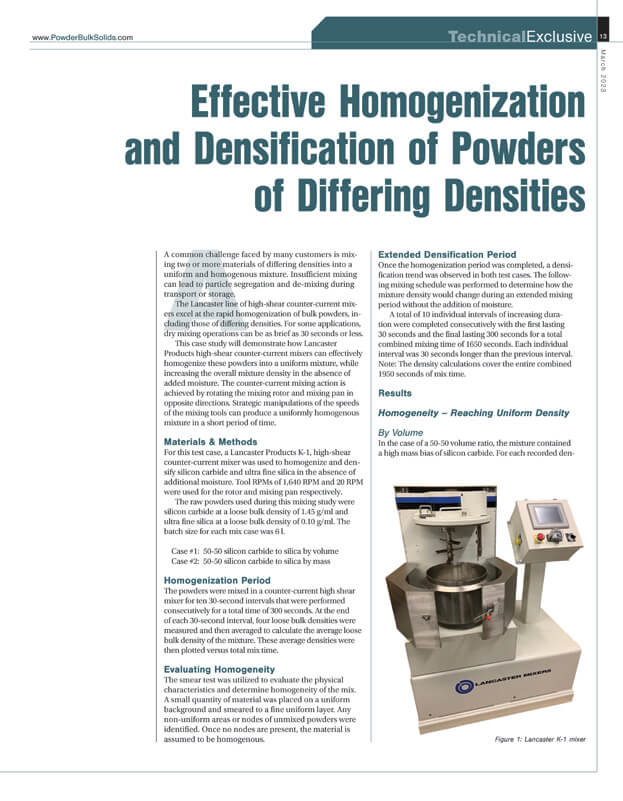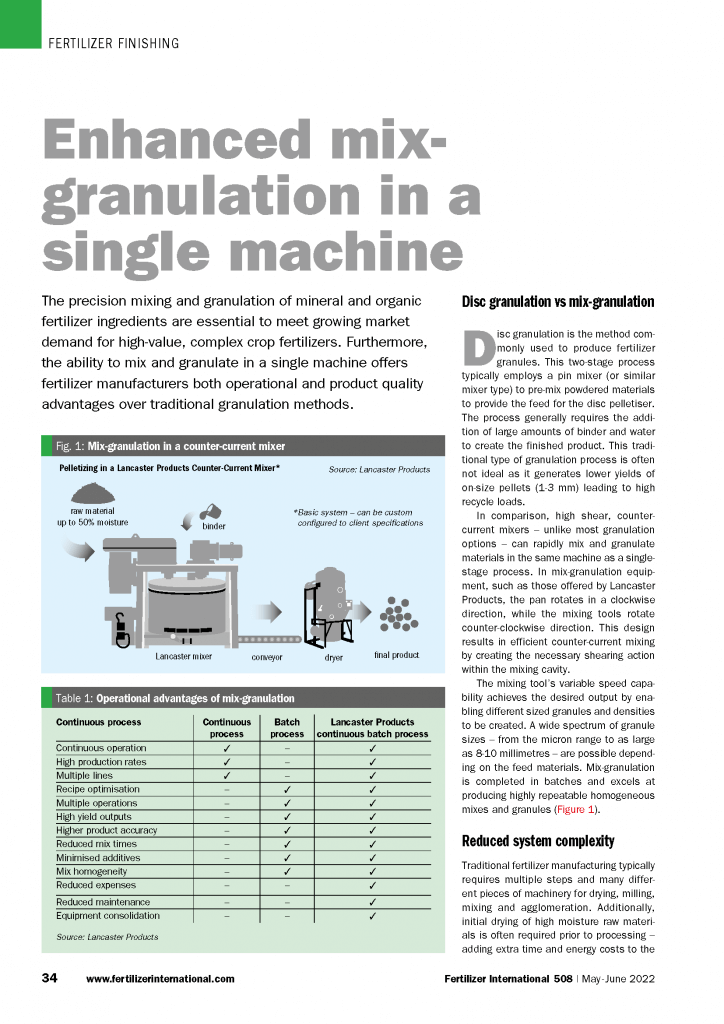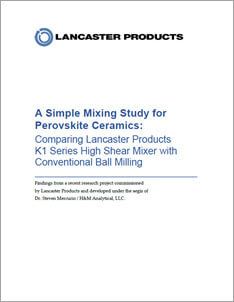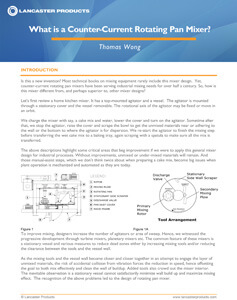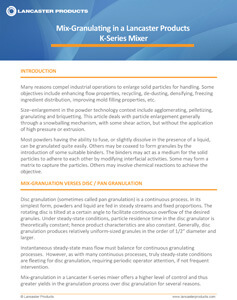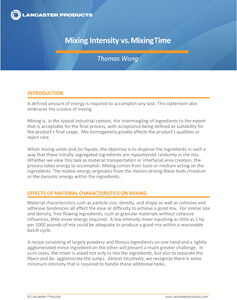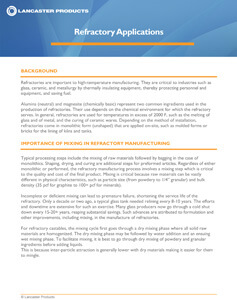Articles, Reports, and White Papers
Effective Homogenization and Densification of Powders of Differing Densities
Enhanced Mix-Granulation in a Single Machine
A Simple Mixing Study for Perovskite Ceramics
Counter-Current Rotating Pan Mixers
Mix-granulating with K-series Mixer
Mixing Intensity versus Mixing Time
Refractory Applications
Variable Mixing Intensity with Lancaster K-Series Mixer can input custom-designed levels of mixing intensities, varying at will through the use of VFD control. The intensity range typically covers one order of magnitude, or roughly 1-10, to as much as 1-100. This wide range of intensity is more than adequate to handle any refractory applications for very short cycle times.
Ferrite Processing from A Mixing Perspective
With a Lancaster K-series high shear mixer, it is possible to adjust mixing tool speed, moisture level and time to control granule size, the degree of granule consolidation, producing optimum granule densities and hardness. Within limits, drier, smaller and less dense granules are preferred because they economize energy usage, and residence time in downstream processing.


